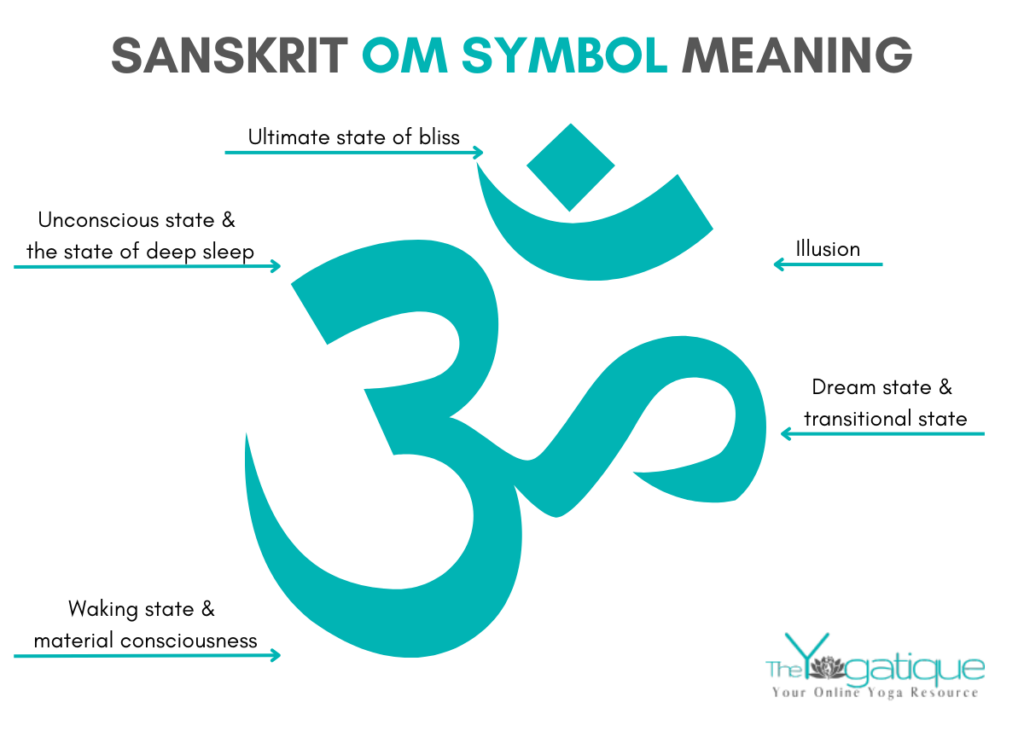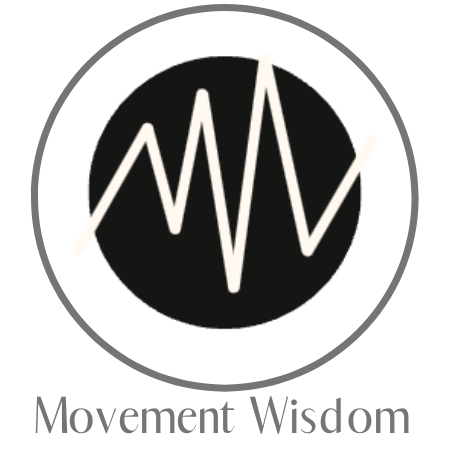As an experienced yoga teacher, I often encounter beginners who have questions about the Om symbol after a yoga class. In this article, I break down what the Om symbol means and the meaning of chanting Om. If you want to know more about the symbol you've seen adorning yoga studio walls, this article is for you.
Let's delve into the meaning of Om the Om symbol and what it represents.
Article content:
(Click any link below to jump directly to section)
Om symbol meaning
The Om symbol is an ancient and sacred icon in Hinduism, Buddhism, and Jainism and is rich with profound meaning and intricate design.
The elements of the design convey the journey from the mundane to the supreme, illustrating the interconnectedness of all existence. The five design elements of the Om symbol and what they represent are:
- The lower left curve – Represents the waking state and material consciousness, the lowest level of spiritual existence based solely on the material world.
- The top left curve – Represents the unconscious state and the state of deep sleep. During deep sleep, our minds shut down and are free from thought and desire.
- The lower right curve – Represents the dream state, a transitional state between the waking state and the deep sleep state.
- The dot at the top – Represents the ultimate state, which is a state of elevated consciousness where spiritual bliss is attained.
- The crescent (semicircle) at the top – Represents Maya, the state of “illusion.” Maya is the biggest obstacle to spiritual development as this state tries to bind us to the material world.

How to use Om in yoga and meditation practices
While, of course, Om symbols are hung in yoga studios and seen tattooed on yogis, the integration of Om into these practices extends beyond something that hangs on the wall or adorns a body. Here are a couple of ways you can use Om:
- As a chant: Chanting Om slowly for a powerful effect on the mind. It's pronounced like this, aaauuu-ooooo-mmmm. Like many Sanskrit mantras used in yoga, Om is often chanted three times.
- As a symbol: Hanging an Om symbol on the wall in your yoga room or placing an Om symbol on an altar can help you connect more deeply with what it represents.
History of the Om symbol
The first mention of Om was in the 5,000-year-old Hindu text The Upanishads, the last of The Vedas. This ancient text explains that Om is “what has been, what is, and what shall be.” Thus, Om represents the past, present, and future.
Om is undeniably one of the most important spiritual symbols in Eastern philosophy. As it is said to be the first sound of the universe, the Om syllable dates back to the creation of the cosmos.
In both Buddhist philosophy and Hindu tradition, it is believed chanting OM balances and cleanses the seven chakras of the subtle body. This leads to improved health and well-being physically, mentally, and spiritually.
Om symbolism in Hindu culture
Om represents the holy trinity of Hindu gods Brahma, Vishnu, and Shiva. These three deities are responsible for all aspects of the universe, creating, maintaining, and destroying it.
- Brahma (the Hindu god of creation)
- Vishnu (the Hindu god of preservation)
- Shiva (the Hindu god of destruction)
Even though Om represents three Hindu gods, it is not a religious symbol or prayer and is not chanted to evoke a particular god or deity.
In Hindi, the word Om means Pranava, which means to hum. According to Hindu teachings, the sacred syllable Om is the primordial sound of creation and the very first sound of the Universe.
↓Great Yoga Alliance certified yoga teacher trainings you should look into↓
Takeaway on the meaning of the Om symbol
As you can see, Om is much more than a pretty symbol found on the walls of yoga studios. Dating back to the beginning of the universe, it's likely we may never fully understand the extent of the Om's meaning.
Still, if you've chanted Om it before, you've probably already experienced its incredibly soothing qualities. So why not add it to all your yoga and meditation practices, and invite more spiritual awareness and inner peace into your life? Are you fascinated by yoga symbols? Check out these articles about the Unalome symbol and the Hamsa hand.
FAQ about Om
Which chakra does chanting Om activate?
Chanting Om can help to open the crown chakra, allowing you to access higher states of consciousness and tap into your intuition.
Why is the word Om so powerful?
Om is a sacred mantra, and it is also thought to be the cosmic sound that initiated the creation of the universe. According to the 5,000-year-old Hindu text The Upanishads, Om also represents the past, present, and future.
Some online yoga studios, online yoga teacher training programs, and brands that we write about may offer us a small percentage should you decide to purchase after reading our content. Thank you for enabling us to exist!












